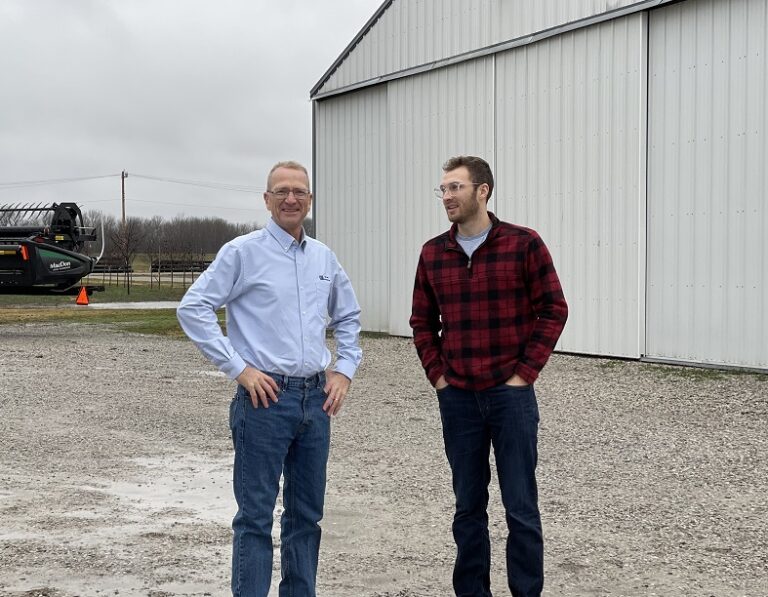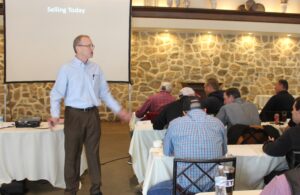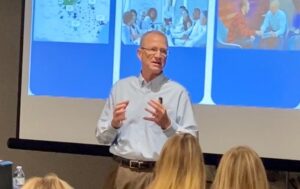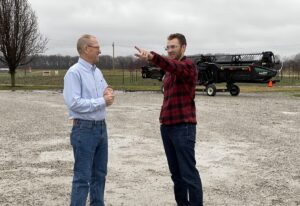The Day our Feed Trucks Quit
I still remember the location on Highway 90 that I was driving on when I got the call from the feed mill. On a boiling, warm Tuesday morning in July, my family loaded into the minivan and headed to O’Hare for the vacation of a lifetime. Fifteen years earlier, our daughter was born in Fairbanks AK, while we were there in the service. We planned for many years to bring the family back when the kids were old enough to enjoy hiking, fishing, and camping in the great white north. Today was that day. It started out with a lot of promise and excitement but as I contemplated taking what I thought would be that one last call from work, I was glad that everyone was asleep and I could take the call without losing that work/life balance.
“Greg, have you heard about the trucks?”
“No, what about them?”
“They quit. They aren’t delivering any more feed for us”
Tensions had been building for some time by this point. Many years earlier, we had outsourced our feed delivery. The first fifteen years went fairly smooth. Not that we didn’t have some driver issues, but the relationship between us and the owner was fairly solid. That owner had retired and we were about 4 years into the new trucking company. To say it politely, things weren’t going well. We had a brand-new feed mill that was just starting to run right, but our load-out bins were a challenge. If we didn’t have good coordination with our truck dispatcher, it would bin lock the mill, and production of bulk feeds would grind to a halt. It felt a lot like the tail was wagging the dog as the contract hauler was driving our production schedule.
“Well, what do we do now?”
I’d like to say I turned the car around and went back to help fix things, but I didn’t, and glad I didn’t. We had plenty of capable people at the mill that could handle it. I’d also like to say that this story is like one of those parables where everyone comes to work with positive attitudes and jumps in to help the effort. We get through it with increased customer satisfaction and it goes down in company folklore as our greatest moment. But, that didn’t happen either. Instead, over the course of the next 60-90 days, it was a mad scramble to get every piece of rolling stock that could haul feed in a four-state area onto our property, get them loaded, and hand them a set of delivery instructions that we prayed they would follow. Feed delivery trucks with trained drivers aren’t just readily available; especially the kind that can run day in-day out in a 200-mile area. We searched far and wide and found some interesting characters to deliver for us, to say the least. If we ever meet someday, ask me about the owner/operator that traveled with two full-grown poodles in his truck.
It took a lot of effort on a lot of people’s part to get the feed delivered until our new delivery trucks were up and running. The heaviest burden fell on the shoulders of the CSRs (Customer Service Reps) who took the phone orders and tried to line up delivery. We had trucks from 4 tons with one compartment to 24 tons and multiple compartments. We had pellets, meal, crumbles, and textured feed. We had medicated feed that had to be separated by compartment or on separate trucks. We had bag trucks, bulk trucks, bag/bulk combos, and other variations. Putting all those pieces of the puzzle together took an enormous amount of understanding by the CSRs. They had to know the trucks, the customer locations, the anticipated feed needs of the customers, our feed mill capabilities, and how to prioritize it all. They had a lot of help from the production crew, the sales team, and several managers (I’d like to think the managers helped. If not, we meant well). As mentioned, I’d like to say we all jumped in like one big happy family and got it done, but the truth is, we jumped in just like one big family – we got along but scrapped as brothers and sisters would do. Always in overall support of each other, but they were tough times, and coordinating delivery could get complicated and heated. In the end, our new trucks began rolling off the production line one by one. By September, we were completely up and running with the new trucks.
Below are a few things I took away from this “character-building” experience that will always stick with me.
- Look for the Achilles heel in your operation – there might be several, but if you have outsourced one of your Achilles heels, you better have a really good idea of how to replace it.
- Document, document, and then document a little more – Delivery instructions were sparsely written down and most were only kept by the drivers. When this happened, we had a mad scramble by the sales team and CSRs to draw up directions with bin locations and get them into a set of Word files that could be printed for the driver. This will be extremely difficult as nobody wants to take the time to keep this up to date. We lost valuable time and effort getting this set up in the first several weeks.
- Realize how critical roles are within your customer service area – you need multiple people that can fulfill these roles. In agri-business offices, there always seems to be that one person that’s been there forever and knows how to keep all the moving parts moving. I’ll write another day as to the upside and downside of that situation. I know business is tight and we will always run lean on payroll as it is such a big expense. Just be careful if you have positions that are one deep and require vast amounts of head knowledge. At the start of this experience, we ran the mill with that one primary CSR. We did ok, but as this situation got worse, it took everyone in the office to jump in and help. However, with only one person that knew the job, it was difficult for people to support that one CSR. Have backups and make sure they are trained.
- Get in front of customers and communicate – This experience was as difficult for customers as it was for us. They wanted to buy from us but it just got too difficult and unpredictable. Salespeople, sales managers, and plant managers all got in front of customers and were present in the mill as much as possible. We stayed readily available as much as possible. Calls were coming into the office and our cell phones on a rapid basis from customers, drivers, and salespeople in the field. They needed real-time info on where and when their feed was going to be delivered. We let customers know what was going on, what our limitations were, and how progress was coming on getting a permanent fix to the problem. During those 60-90 days, we certainly lost some business due to animals needing to eat and we weren’t able to deliver in time. However, the fact that customers could see we were doing everything possible and openly communicating, we were able to hold on to customers after the situation was resolved.
In the end, we made it through to the other side of this very bad day (70+ days) …wiser, stronger, and much more organized in our business. Happy to have the experience behind us, but…
Unfortunately, there were to be two days worse than this “day”. More on those fun-filled experiences later.
To Schedule a Free initial coaching session today, contact me directly at Greg@GregMartinelli.net
For more on Ag Sales Training, Ag Sales Coaching, and Leading Ag Sales Teams, go to




